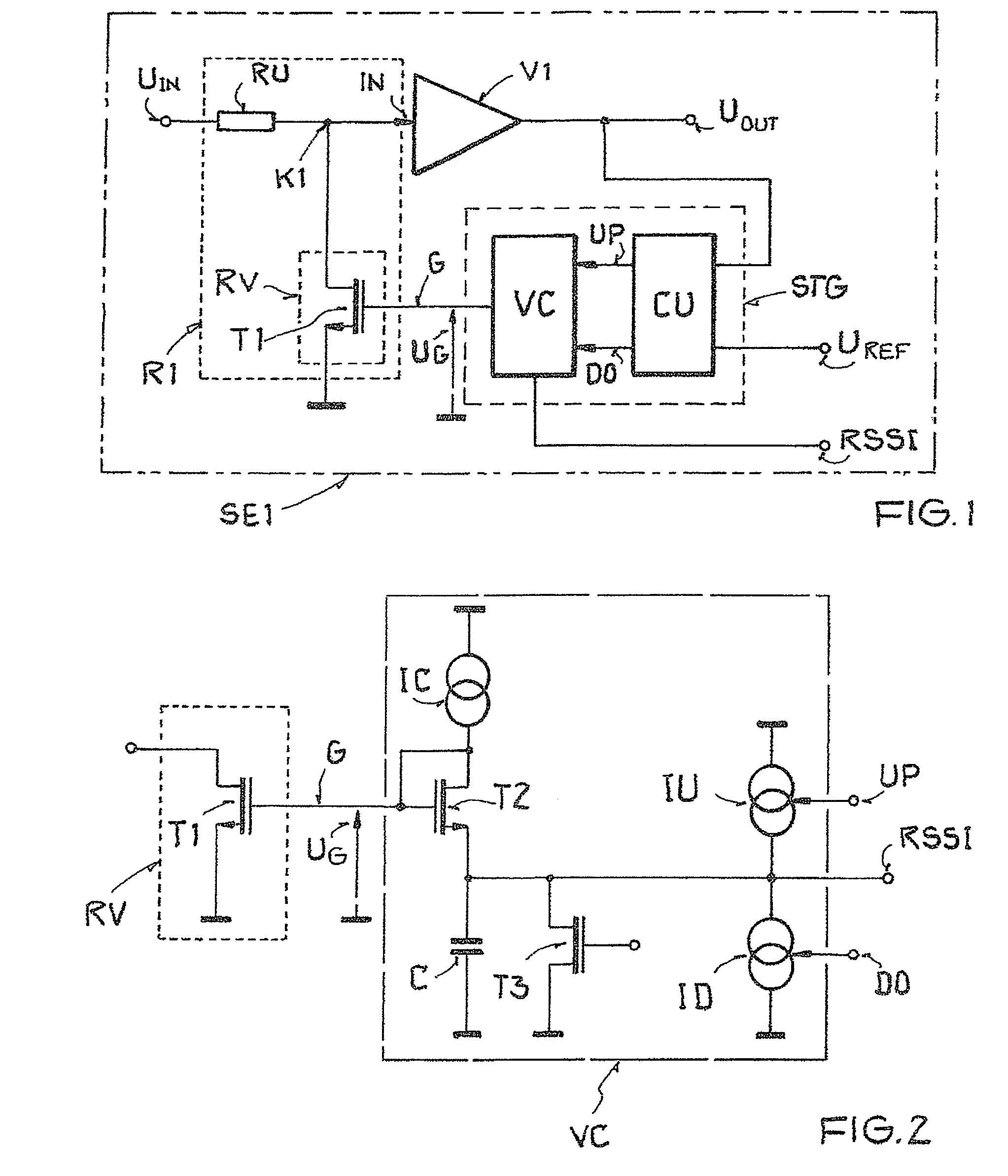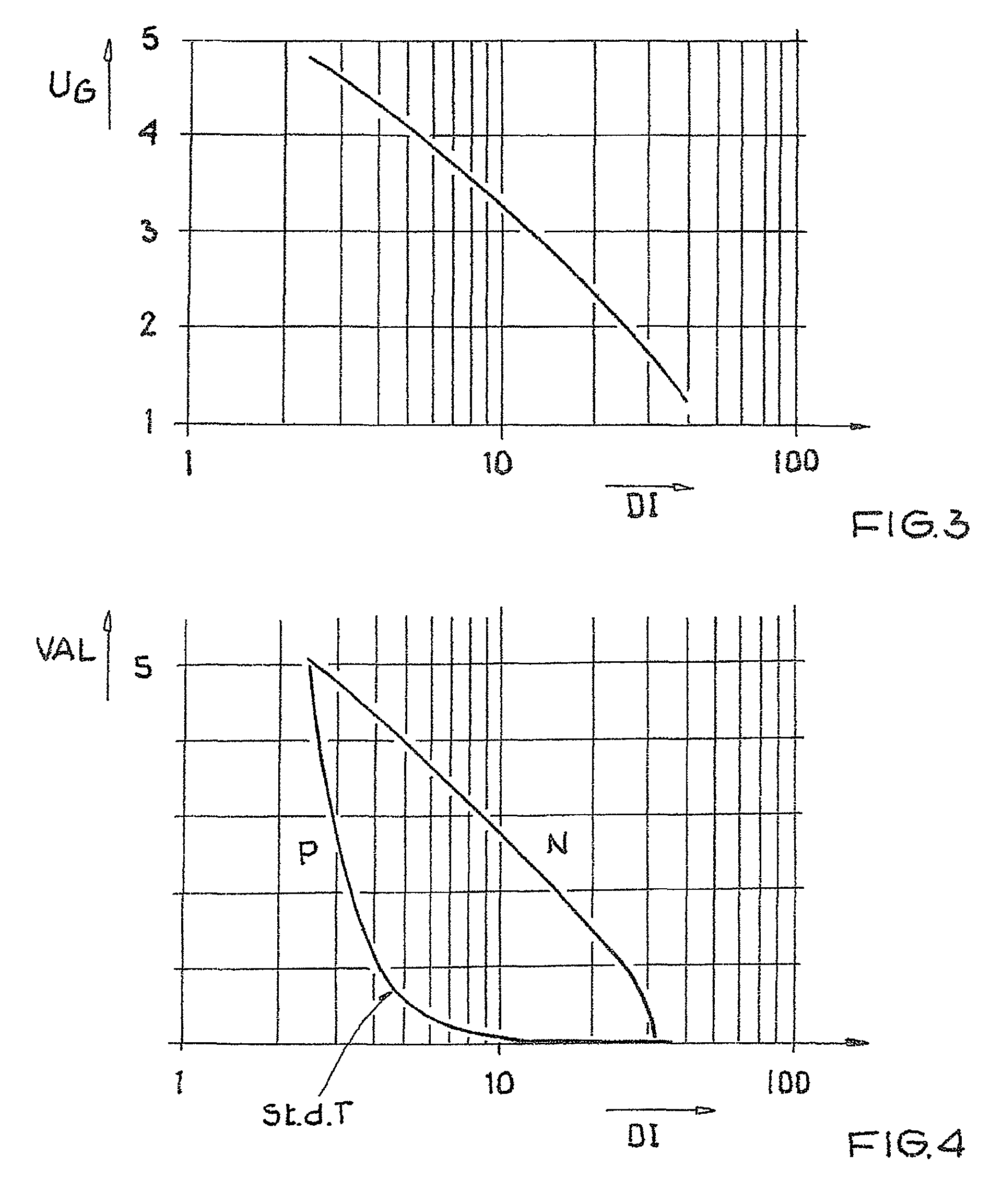Method for obtaining field strength information
a field strength and information technology, applied in the field of field strength information and circuit arrangement, can solve the problem of insufficient spatial resolution, and achieve the effect of advantageously determining the field strength of an input signal
- Summary
- Abstract
- Description
- Claims
- Application Information
AI Technical Summary
Benefits of technology
Problems solved by technology
Method used
Image
Examples
Embodiment Construction
[0021]The task of the receiver unit SE1, shown in FIG. 1, with an internal circuit arrangement is to amplify an input signal UIN, which has an alternating voltage form and is proportional to the field strength of an electromagnetic signal received by a receive antenna (not shown), by means of an operational amplifier V1 by a fixed factor and hereby to hold the output signal UOUT within a predefined interval by means of a control element STG, which changes the resistance value of an input resistance R1, realized as a voltage divider. The circuit arrangement will be described in greater detail below.
[0022]The voltage divider consists of a resistor RU and a MOS transistor T1 linked to a reference potential and realized as a controllable resistance RV. Further, the voltage divider has a node K1, which is connected to the noninverting input of the operational amplifier V1 and to a terminal of MOS transistor T1. Operational amplifier V1 has a fixed amplification factor. The control elemen...
PUM
 Login to View More
Login to View More Abstract
Description
Claims
Application Information
 Login to View More
Login to View More - R&D
- Intellectual Property
- Life Sciences
- Materials
- Tech Scout
- Unparalleled Data Quality
- Higher Quality Content
- 60% Fewer Hallucinations
Browse by: Latest US Patents, China's latest patents, Technical Efficacy Thesaurus, Application Domain, Technology Topic, Popular Technical Reports.
© 2025 PatSnap. All rights reserved.Legal|Privacy policy|Modern Slavery Act Transparency Statement|Sitemap|About US| Contact US: help@patsnap.com



